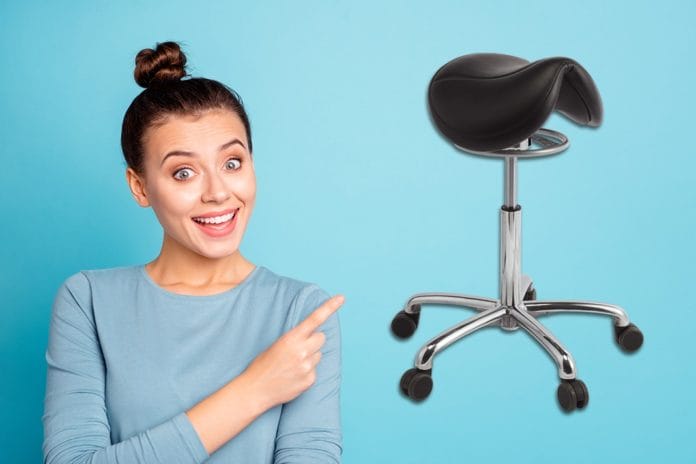Disclosure: This article is sponsored content from The Brewer Company as part of our sponsored partner program.
The number one cause of early retirement in dentistry is musculoskeletal disorders, making the number one preventive measure to be proper ergonomics. Dental hygienists are preventive care specialists. We work hard to help our patients achieve optimal overall health. However, often I see that dental hygienists aren’t putting the same emphasis on their own overall health.
Instead of investing in preventive care of our bodies through proper ergonomics, we are spending time and money to fix the damage that the job we love imposes on our physical health. This also leads to mental stress and exhaustion due to missed time at work and the financial strain of treatment with chiropractors, massage therapists, and physical therapists.
Through the years, many products and information have helped clinicians achieve better ergonomics. Medical and dental magnification loupes, lightweight instruments and handpieces, and proper stretching and physical exercises are just a few of the things that have improved occupational health in dental hygiene.
Although these are all very important pieces to the puzzle of keeping dental hygienists in good physical health, the biggest piece is our operating chairs. Poor working posture in dentistry has been shown to be the main cause of musculoskeletal disorders in clinicians. The stool used during patient treatment can be beneficial or terribly detrimental.
Importance of Sitting Posture
Studies have indicated that a 90-degree sitting posture passively increases tension on muscles and causes a posterior pelvic rotation that adds pressure to the lumbar spine. Several studies clearly indicate a slight anterior tilt of the pelvis is the most efficient way to reduce lumbar pain.1
In addition to causing musculoskeletal disorders, slouched sitting also reduces lung capacity. The diaphragm attaches at several different points on the spinal vertebrae and ribcage; changes in the position of these bony structures inhibits proper function of the diaphragm. A study comparing slouched and upright posture on respiratory muscle strength concluded, “Prolonged slouched position may induce breathing disorder and affect surrounding structures including the heart and phrenic nerve.”2
Finding the Right Saddle Stool
The results of the research are abundant and clear. Science supports the use of saddle stools for improved posture and better ergonomics. The next question is how do you choose the right saddle stool for you? Many saddle stools are available on the market with a wide range of prices. It is important to note that not all saddle stools are created equal. There are certain qualities and features that make certain brands better.
The best option is a custom-fitted saddle stool because we are all made differently. I am five feet tall, which makes many stools, conventional or saddle, difficult to find the right setting for proper posture and, in some cases, downright impossible.
This is one of the reasons I find The Brewer Company saddle stools to be a good choice. The Brewer Company offers two different saddle stools. The 135AS Amazone model features a narrower seat width of 13 inches for small framed clinicians. It also comes in two cylinder heights, standard and low.
The second saddle stool, 135JS Jumper, is modeled after an equestrian jumping saddle. The seat is more flared with a 17-inch width; it also comes in two-cylinder heights, standard and high, for those clinicians with longer legs.
The correct seat height is essential for achieving proper posture. The knee angle should be 135 degrees for proper posture; this is easily attainable with Brewer saddle stools because of the multiple cylinder heights offered.3 The Brewer Company also offers a 5-year comprehensive warranty.
Customized Options
Offering customized options is just the beginning. The Brewer saddle stools also includes a balance mechanism. This balance mechanism allows the seat to move in the direction of the center of gravity. This mechanism keeps the spine and pelvis in a neutral position, which helps strengthen core abdominal muscles to reduce back pain. The amount of resistance and balance required can easily be adjusted to fit your preference. Core stability, the ability to control position and movement using muscles of the midsection, is essential for both static and dynamic balance. Core strengthening is one of the best ways to improve your posture, both sitting and standing. Core stability is essential for both static and dynamic balance. The balance mechanism offers benefits that go beyond better ergonomics in clinic.
Brewer saddle stools ncorporate muscle strengthening along with better posture, and it comes in more than one design to better fit you. So, let’s address the elephant in the room, the cost. Yes, the Brewer saddle stools are more costly than some others you can purchase online. However, the saddle stools available online are far from customized, and they do not have the patented balance mechanism feature mentioned above.
Missing Work vs. Cost
Without proper fit and customization, a generic saddle stool can do more harm than good with respect to musculoskeletal injury. Also, consider the amount of money you will save over time by missing work due to injury or pain and in medical costs. Not to mention the decreased pain and possible physical disorders that can be avoided with the proper saddle stool, which can lead to quality of life issues and a shortened career altogether.
For instance, for easy numbers let’s say you make $300 per day (working eight hours at a rate of $37.50). If you can avoid missing four days of work, your saddle stool paid for itself. Think a little longer-term. If your career is shortened by months or even years due to musculoskeletal injury and/or pain, you’ve lost thousands, if not tens of thousands of dollars. Here, the upfront cost of a quality, individualized-fit saddle stool pays for itself many times over. How much is your quality of life and career worth?
As dental hygienists, we know the power of prevention; it saves time money and discomfort, some of which can last a lifetime. We preach to our patients about prevention. Don’t you think it is time to practice prevention for your own health? Saddle stools have taken ergonomics and prevention of musculoskeletal disorders to a new level.
For more information on The Brewer Company’s saddle stools, click here.
References
- Gouvea, G.R., Vieira, W.A., Paranhos, L.R., Bernardino, I.M., Bulgareli, J.V., Pereira, A.C. Assessment of the Ergonomic Risk from Saddle and Conventional Seats in Dentistry: A Systematic Review and Meta-analysis. PLoS One. 2018; 13(12): e0208900. Retrieved from https://www.ncbi.nlm.nih.gov/pmc/articles/PMC6296655/
- Albarrati, A., Zafar, H., Alghadir, A.H., Anwe, S. Effects of Upright and Slouched Sitting Postures on the Respiratory Muscle Strength in Healthy Young Males. Biomed Res Int. 2018 Feb 25; 2018: 3058970. Retrieved from https://www.hindawi.com/journals/bmri/2018/3058970/
- Babaei, H., Razeghi, M., Choobineh, A., Pakshir, H., Rajaeifard, A., Rezaian, J. A New Method for Calculating Saddle Seat Height with an Emphasis on Optimal Posture Based on Trigonometric Relations. Int J Occup Saf Ergon. 2016 Dec; 22(4): 565-571. Retrieved from https://www.ncbi.nlm.nih.gov/pubmed/27232583












